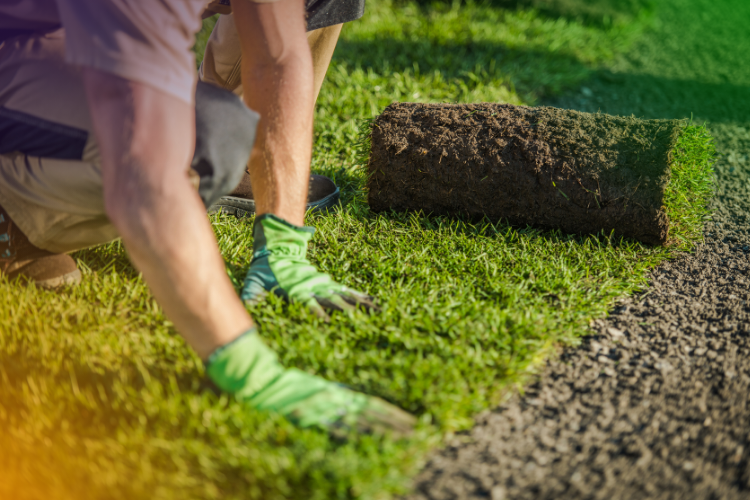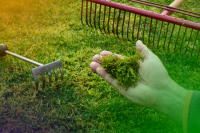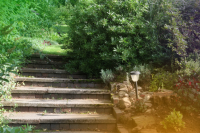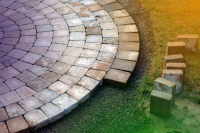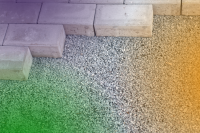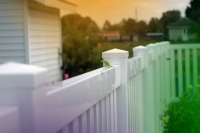Lawn looking dishevelled? Learn how laying, and repairing turf can rejuvenate your garden lawn to its former glory with our handy guide to laying and repairing turf.
Getting a beautiful finish on your lawn can take quite some time and effort. Many lawns are plagued by weeds, moss and patchiness, and dealing with any of these problems can be tricky, expensive and time consuming. One way which guarantees a perfect lawn every time is to rip up the existing surface and replace it with completely new turf.
How Much Turf Do You Need?
To work out how much turf you need, measure your lawn then multiply the length by the width to give you the area in square yards. Buy about 5% extra as there is bound to be some wastage.
Choosing Turf
Always buy turf from a specialist supplier or reputable garden centre. Ensure that the turf is well cared for and not dried up and yellowing at the edges. If having the turf delivered, check each roll before it is unloaded from the lorry and reject any rolls which are not up to the standard. Before the turf arrives, water the soil well to prepare it. Turf is available to from most DIY stores in 1 square-yard rolls. Turf is usually delivered into a local DIY store on a specific day so we recommend contacting your local store to find out their turf delivery day. Before purchasing your turf in store, check the weather forecasts. Avoid prolonged wet spells and periods when frost is expected. If you unable to lay your turf immediately, don’t leave it rolled up or it will turn yellow within a couple of days. Unroll it and lay it flat, somewhere out of the sun, and make sure it doesn’t dry out.
Step 1. Preparing the site
Turf should be laid on a smooth, firm and flat soil surface with good drainage. The site should be open and not excessively shaded by trees or buildings. Turf can be laid at almost any time of the year providing the soil is not waterlogged or frozen, with Spring and early Autumn being the best times.
- Remove any existing grass by under-cutting with a spade. For larger areas a quicker and easier option is to hire a turf stripper.
- Dig over or rotovate the area to be turfed to a depth of about 15cm, removing all debris, large stones, weeds and old tree roots.
- If the surface is uneven, add some topsoil and rake over the ground to produce a smooth surface. Add pre-turf fertiliser to enrich the soil so that new turf establishes quickly. Firm down the soil by lightly rolling with a roller (this can be hired) or by treading the area with your feet. Rake over again and repeat the process until the whole area is level, even and firm. A wide rake makes levelling easier. The ground should be firm but not compacted.
Lawn Preparation
The best time of year to lay a new lawn is in the Spring or Autumn, when the sun is not going to scorch the newly laid lawn, and there is no risk of frost. If laying a lawn in the middle of Summer, extra effort will be needed to look after the turf and keep it well watered while it beds in properly. If there is grass on the area to be turfed, this will have to be removed before laying the turf. Hiring a specialised machine is the easiest way to do this, alternatively it can be done with a spade and a lot of hard labour.
Once the area where the turf is to be laid has been cleared, the ground should be raked over and any large stones removed to create as level and even a surface as possible for the new lawn. If the soil is particularly poor, it is worth investing in some good quality top soil and then raking this evenly over the surface of the garden. The soil then has to be compacted slightly, and the easiest way of doing this is to walk over the area to be turfed.
Laying the Turf On Your Lawn
Turf will give you an instant lawn. The weather and the quality and freshness of the turf can make a difference – but laying is relatively straightforward and requires no specialist skill.
As soon as the turf arrives, start to lay it on the lawn. Turf left lying around will dry out and the grass will begin to die off. Start at one corner of the lawn and lay out the turf in long strips. Make sure all the strips are joined closely together and push them down gently into the soil using a rake or piece of wood. Use a spade to cut the pieces of turf to the correct length.
Step 2. Laying the turf on your lawn
Check with your local water authority before using a hosepipe and sprinkler to see whether there is a hosepipe ban in your area. If so, we recommend the use of a watering can filled from a butt to water newly laid lawn.
- Mark out the boundaries of the intended lawn area clearly using a builder’s line and sharpened wooden stakes or pegs. Use a club hammer to drive them in to the ground. Lay turf along all the edges first with the longest sides of the turfs parallel to the boundary line - if there is a curved edge you will need to overlap pairs of turfs slightly and then trim off the excess. Cut turfs to size with a long-bladed knife or a half-moon edging iron. When turfing up to hard edges, ensure the top of the soil is level with the edging before laying the turf. This leaves the surface of the lawn above the surface of the surrounding hard surface so that you can mow up to the edge.
- Lay the turf in rows across the site working forward from a straight side. Stagger the joints, as in brickwork, from row to row. Butt the ends and edges tightly together without stretching the turf to ensure there are no gaps any where. Use a board as a platform to work from, placed on top of turfs you have just laid.
- If you spot a hollow in any of the turfs, peel back the turf and fill beneath with topsoil before replacing the turf. Fill any gaps between turfs by sprinkling some fine topsoil into them and brush over with a soft broom to ensure even coverage.
- Roll the finished lawn with a light roller to level the turf and bed into the soil.
- Tidy the edges of your new lawn with a longbladed knife or half-moon edging iron. Curved edges can be created by marking out the line with a hose pipe or a trail of silver sand.
Bedding In The Turf
As soon as the turf has been laid, it should be watered thoroughly. Try to keep people off the turf for the first few days to give it a chance to bed in, and water every day during this period. If the weather is very hot, the lawn will need to be watered more frequently. Once the lawn has been properly bedded in, it can be treated like any other lawn and it should be cut, watered and fed regularly to keep it looking its best throughout the year.
Tools required
- Spade
- Rake
- Builders line
- Club hammer
- Lawn edger
- Hosepipe
- Timber board
- Wheel barrow
- Pre-turf Fertiliser
Maintaining a new lawn
Watering
Thoroughly water your newly laid lawn - a sprinkler is the most effective way of providing an even soaking. Repeat this watering until the turf has established - weather conditions will dictate the frequency of watering required but your lawn will dry out most quickly when conditions are warm or windy. In Spring and Summer, a newly laid lawn will require watering once or twice a day. If your lawn dries out your turfs will shrink and gaps will appear.
Mowing
Avoid walking on your new lawn for a couple of weeks to allow the turf to bed in and knit together.
Mow the new lawn when the turf has rooted, setting the blades at the highest setting. Thereafter, mow regularly, each time removing no more than one third of the grass height. You can tell when the turf has rooted by trying to lift an edge - if it won’t come up, it has taken root.
Feeding
If your new lawn has been laid in Spring you can commence feeding after two months with a lawn fertiliser. A lawn laid in Autumn will not require feeding until the following Spring.
Repairing an established lawn
You can use one or more rolls of turf to repair bare patches in your lawn giving an instant repair solution.
- Cut out a strip of lawn containing the bare patch to the same size as the roll or rolls of replacement turf using a half-moon edging iron. Undercut with a spade to remove the old turf strip.
- Add topsoil or remove some soil to achieve the correct soil level using the thickness of the new turf as a guide. Ensure the soil surface is level and scatter on pre-turf fertiliser.
- Lay the turf in position, checking that the turf is level with the surrounding lawn. If there are any slight mounds or hollows, peel back the turf and either remove some soil or fill with a little topsoil before replacing the turf. Butt edges of the new turf tightly to the edges of the existing lawn.
- Water thoroughly and keep well watered until the new turf is established.
- If the damaged area is at the edge of a lawn carry out the same repair process described (left) and trim the edge of the turf with a longbladed knife or half-moon edging iron.
